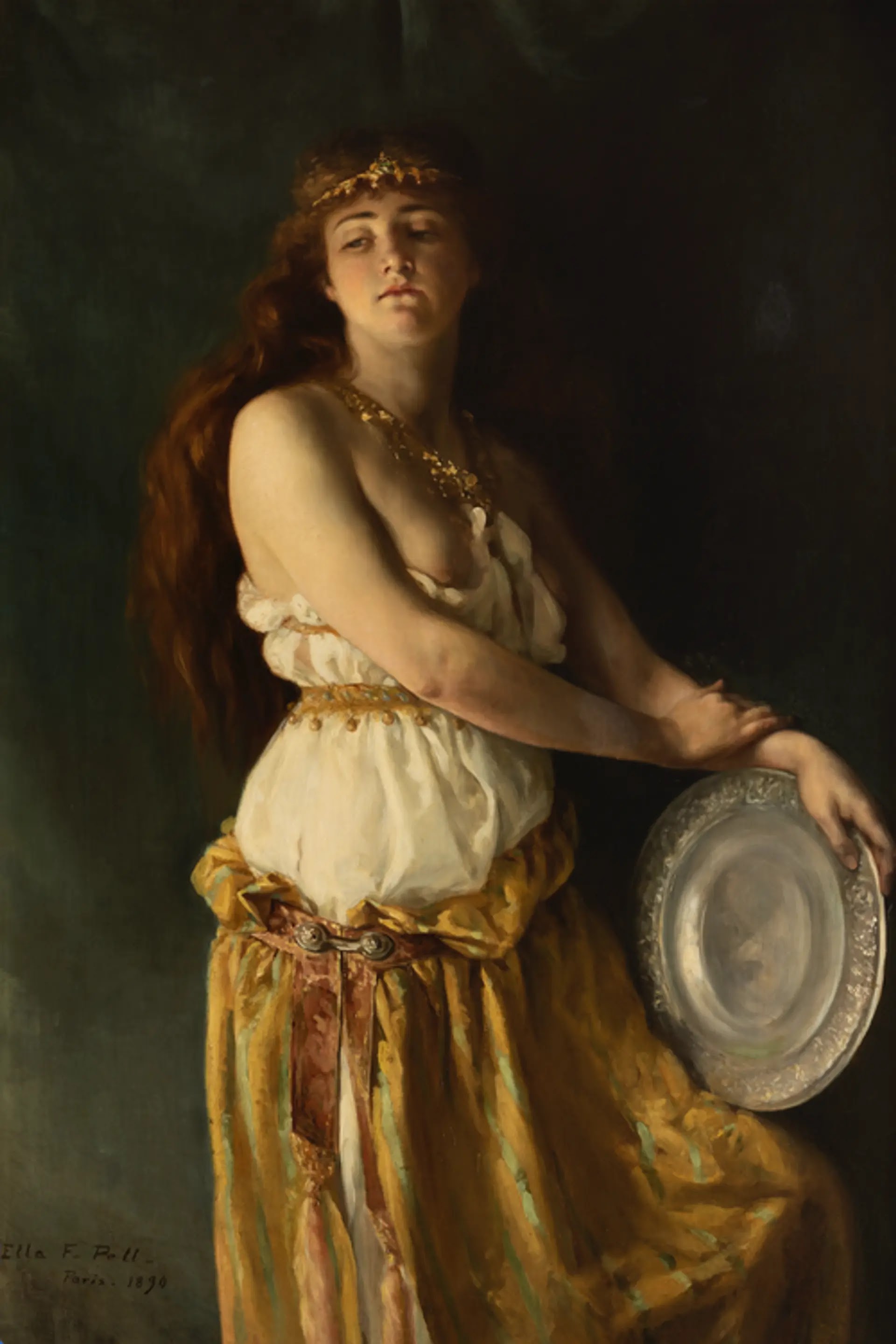A Feminist Salomé for the Timken
 |
| Ella Ferris Pell, Salomé, 1890. Timken Museum of Art, San Diego |
Pell (1846-1922) is far from a household name, but her career has intrigued scholars. St. Louis-born, she studied with the eccentric sculptor and painter William Rimmer. Pell was living in Paris when she painted Salomé, exhibiting it at the Salon. The subject was by then a Symbolist cliché, but Pell presents the Biblical anti-hero as an empowered woman. Salomé was shown at New York's National Academy of Design and then fell into obscurity for nearly a century.
Bram Dijkstra led the Pell rediscovery. He used Salomé as the cover image for his 1986 book Idols of Perversity: Fantasies of Feminine Evil in Fin-de-Siècle Culture. There he wrote:
Pell’s Salomé, a real life-woman, independent, confident, and assertive, was far more threatening, far more a visual declaration of defiance against the canons of male dominance than any of the celebrated viragoes and vampires created by turn-of-the-century intellectuals could ever have been. Such a woman could not be disposed of in as cavalier a fashion as the evil women in man’s mind. Her indomitable reality was this feminist Salomé’s most formidable weapon, far more dangerous than any imaginary decapitating sword.
This attention led the inclusion of Pell in a 2000 show on American Orientialism at the Sterling and Francine Clark Institute; and to the showing of Salomé at the Timken in "Captivating Women from the Dijkstra Collection." The pandemic forced an early close to that spring 2020 exhibition.
Pell is otherwise not much to be seen in museums. The Metropolitan and Smithsonian American Art museums—which seemingly have examples of every American artist who was ever of note—have nothing by Pell. As far a quick Internet search reveals, the only other place you can see Pell paintings is Fort Ticonderoga in upstate New York. Pell's family owned the Revolutionary War site and transformed it into a public facility. The associated museum has an open-storage exhibit of 43 works by Pell. There is also a group of Pell's travel drawings at Vassar.
It follows that the Timken will have a lead role in promoting Pell awareness and scholarship. At the Timken Salomé joins several high points of American art, among them Raphaelle Peale's Cutlet and Vegetables and Eastman Johnson's The Cranberry Harvest.
Comments
My go-to image of Salome is the Met's 1870 work by Henri Regnault (French). She could electrify a whole metro county with her eyes alone.
Henri Regnault | Salome | The Metropolitan Museum of Art
https://www.metmuseum.org/art/collection/search/437384
***
San Diego's art collections are the real deal. I'd love to see them.
SDMA has a trove of Zurbaráns. And a riveting Vouet.
A lovely Rubens oil sketch for the Triumph of the Eucharist Series.
A killer Head of a Philosopher by G.B. Tiepolo.
A brilliant copper by El Greco.
A Giorgione portrait in a country where Giorgiones practically don't exist.
And, stunningly, a Giotto as well.
Aptly, a Thiebaud for dessert.
Timken.
I'd pay the price of admission just to see Emanuel de Witte's Interior of the Nieuwe Kerk, Amsterdam, of 1657.
Also, Petrus Christus's Death of the Virgin, of 1460-65.
So many collections, so little will to fly.
The country is too big. I'm gonna write a strong letter.
The Pell Salome follows a different style. To me, it's both more fitting but also less fitting for what the "narrative" Lucas Museum is going to be all about. Same thing with the Renault work, but in a less Rockwell-ish way.
Although they're both technically very skilled, the hair-fine-precision of pre-Raphaelite paintings makes me think of canvases by Norman Rockwell. Or a bit perfume-y---the crammed, jammed Louvre is rather perfume-y for my tastes too.
Regardless, people like Pell are a reminder of just how much talent exists out there. They're recurring examples that who is or isn't feted is a matter of luck, good timing and the whims of the tastemakers at any given moment in history.